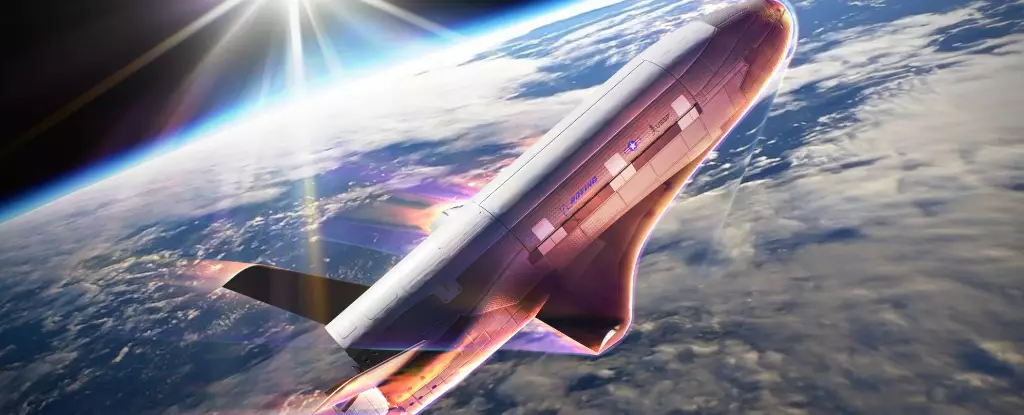The X-37B Orbital Test Vehicle (OTV) represents a significant leap in modern space exploration, capturing the intrigue of scientists, government officials, and space enthusiasts since its inception in 2011. Developed by Boeing and currently operated by the United States Space Force (USSF), this enigmatic space plane is specifically designed for missions in Low-Earth Orbit (LEO), which ranges from 240 to 800 kilometers above Earth. The X-37B’s primary mission is to test reusable vehicle technologies that pave the way for national security objectives in the vastness of space.
On December 29, 2023, the X-37B initiated its seventh mission (OTV-7), bringing a renewed focus on its experimental capabilities. This mission is particularly noteworthy as it aims to explore the effects of space radiation while also testing Space Domain Awareness (SDA) technologies. The X-37B will conduct a series of innovative maneuvers, including ‘aerobraking’—a technique that uses the chaos of Earth’s upper atmosphere to reduce speed and alter orbital altitude with minimal fuel expenditure. This is a groundbreaking maneuver for the X-37B and further solidifies its role as a sophisticated tool for both experimental and defense-oriented operations in space.
Aerobraking involves deliberately dipping into a planet’s atmosphere to slow down a spacecraft, a method that has been successfully employed in various missions to Mars, such as the Mars Global Surveyor and the Mars Reconnaissance Orbiter. The significance of this approach lies in its efficiency; by leveraging atmospheric drag, the X-37B can position itself for upcoming tasks without revealing its operational patterns to potential adversaries, thus enhancing its stealth capabilities.
The incorporation of aerobraking techniques demonstrates the USSF’s commitment to cutting-edge innovation—and to maintaining a tactical advantage in space. Frank Kendall, Secretary of the Air Force, emphasized the importance of these maneuvers, underscoring that they represent a significant milestone in the effort to strengthen national security via advanced technologies. General Chance Saltzman, Chief of Space Operations, expressed similar sentiments, crediting the ongoing dedication and innovation of the X-37B team.
The ability to execute unpredictable orbits, including “egg-shaped” paths closer to Earth, ensures that adversaries struggle to track the vehicle’s movements, as noted by former USAF Secretary Heather Wilson. Such operational strategies not only complicate the tracking efforts of potential adversaries but also enhance the efficacy of American defense and surveillance missions.
One of the most intriguing aspects of the X-37B remains its classified capabilities. Despite extensive discussion about its functions, many details remain undisclosed, raising questions about the breadth of its enigmatic nature. Jonathan McDowell, an astrophysicist, noted that the vehicle’s capacity to alter its orbital timing—thanks to its atmospheric maneuvers—places an extra burden on potential trackers. The implications of this are profound, as it encourages speculation regarding the vehicle’s actual operational range and secretive objectives.
Beyond its agile maneuvering, the X-37B’s mission is expected to include several other tests. The vehicle will conduct experiments that investigate the effects of space radiation on a variety of organic components, most notably plant seeds supplied by NASA. Dubbed the “Seeds-2” experiment, this initiative aims to understand the impact of cosmic radiation on biological elements, further contributing to humanity’s knowledge necessary for long-term space exploration and possible colonization efforts.
As OTV-7 progresses toward its completion, the X-37B remains a focal point of curiosity and speculation. With each successful operation, the space vehicle keeps challenging the conventional paradigms of what can be achieved in LEO and tests the boundaries of aerospace engineering. The commitment to responsible space governance is reflected in plans to release components in accordance with established debris mitigation standards. As the X-37B embarks on this mission, the interplay of secrecy, national security, and innovation underscores the new era of space exploration.
Ultimately, while the X-37B continues to expand both its capabilities and missions, the only certainty is that its contributions will have lasting effects on both defense strategy and the future of interplanetary study. The ongoing journey of this remarkable spacecraft is not only a testament to human ingenuity but also a signal that the race for capabilities in space is anything but over.


Leave a Reply